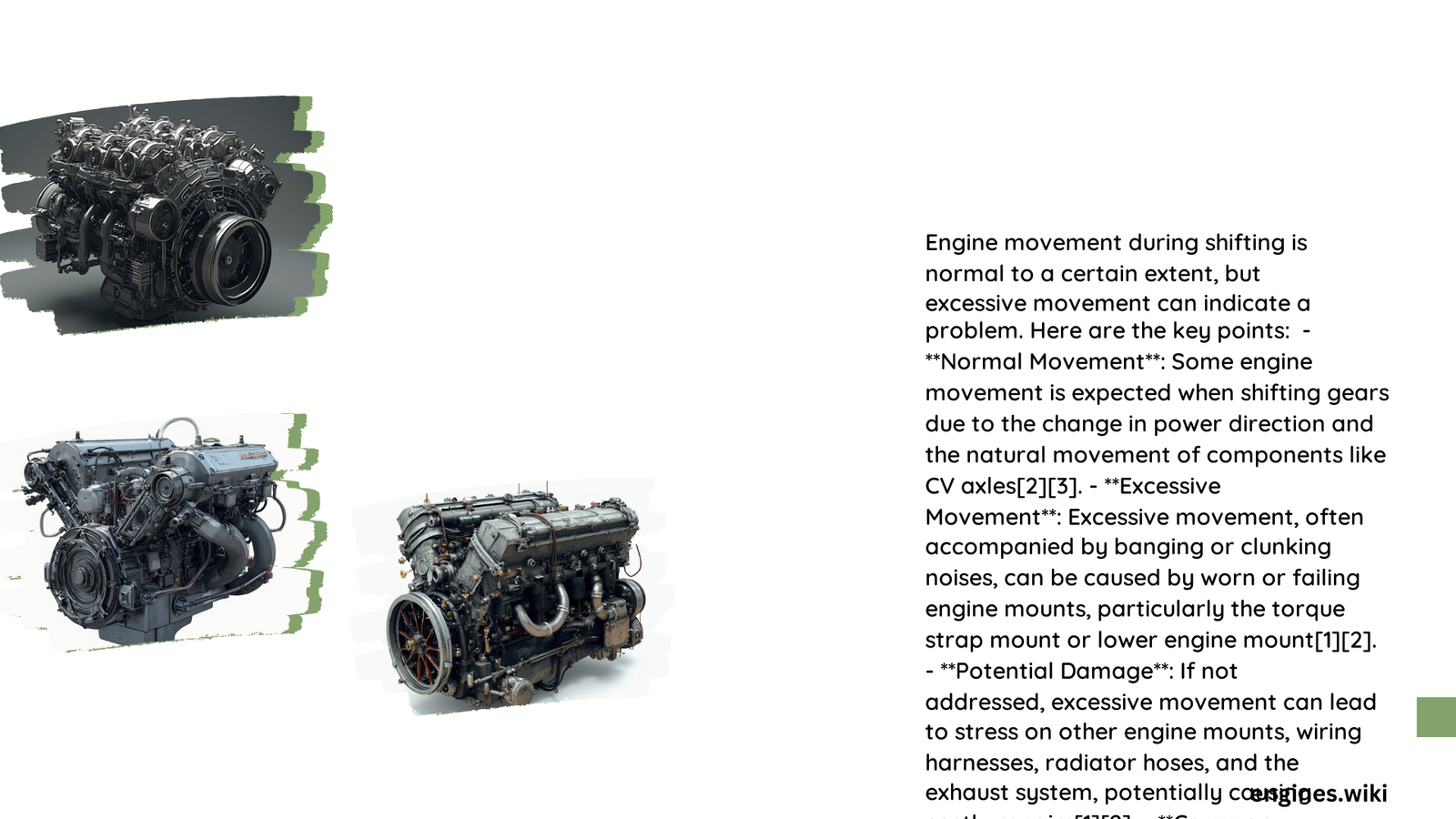Engine movement during gear shifts is a nuanced automotive phenomenon that can signal critical mechanical health. While some movement is inherently normal due to sophisticated engine mount designs, excessive shifting can indicate potential transmission or structural problems that require immediate professional attention. Vehicle owners must understand the delicate balance between expected mechanical flexibility and warning signs of potential system failures.
What Causes Engine Movement During Shifts?
Are Engine Mounts Responsible for Movement?
Engine mounts play a crucial role in managing vehicle vibrations and movement. These specialized components are engineered to:
- Absorb mechanical stress
- Reduce transmission vibrations
- Allow controlled engine movement
- Protect surrounding mechanical components
| Mount Type | Movement Characteristics | Potential Issues |
|---|---|---|
| Hydraulic Mounts | Minimal controlled movement | Gradual wear over time |
| Rubber Mounts | Moderate flexibility | Potential cracking |
| Polyurethane Mounts | Stiffer response | Less vibration absorption |
How Much Movement Is Considered Normal?
Normal engine movement typically involves:
– Minimal vertical displacement
– Slight horizontal shifting
– Controlled oscillation during gear transitions
Factors Influencing Engine Movement
Several critical factors determine acceptable engine movement:
- Vehicle Make and Model
- Manufacturing Design Specifications
- Age of Vehicle
- Maintenance History
- Driving Conditions
What Indicates Abnormal Engine Movement?
Abnormal movement manifests through:
– Excessive vertical or horizontal displacement
– Noticeable chassis vibrations
– Unusual sounds during gear shifts
– Consistent jerking sensations
Diagnostic Approaches for Engine Movement

Can Visual Inspection Reveal Mount Issues?
Professionals recommend:
– Checking mount integrity
– Examining rubber/hydraulic mount conditions
– Measuring displacement during stationary gear shifts
What Professional Tests Detect Movement Problems?
Mechanics utilize specialized diagnostic techniques:
– Chassis-to-engine distance measurements
– Vibration analysis tools
– Comprehensive mount stress evaluations
Potential Consequences of Unaddressed Movement
Ignoring persistent engine movement can lead to:
– Accelerated transmission wear
– Potential structural damage
– Increased repair costs
– Compromised vehicle performance
How Quickly Should Movement Be Addressed?
Immediate Action Recommended:
– Persistent movement beyond 1/2 inch
– Consistent vibration during shifts
– Unusual mechanical sounds
Maintenance Strategies
What Prevents Excessive Engine Movement?
Proactive maintenance involves:
– Regular mount inspections
– Timely replacement of worn components
– Using manufacturer-recommended mount types
– Avoiding extreme driving conditions
Cost Considerations
Mount replacement typically ranges:
– $200-$600 for parts
– $300-$1000 for professional installation
When to Seek Professional Help?
Consult automotive professionals if experiencing:
– Consistent unexplained movement
– Vibrations during gear shifts
– Unusual mechanical behaviors
Technical Insights
Modern vehicles incorporate advanced mount technologies designed to minimize mechanical stress while maintaining optimal performance. Understanding these intricate systems helps vehicle owners make informed maintenance decisions.
Reference:
– SAE Technical Papers on Engine Mounting
– Automotive Engineering Journal
– Professional Mechanics Association Guidelines
